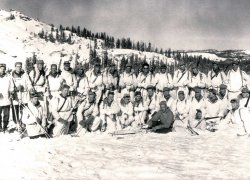
MAY CONTAIN NUTS

Search Shorpy
SHORPY ART

Framed or unframed, desk size to sofa size, printed by us in Arizona and Alabama since 2007. Explore now.
Join and Share
Ad-Free Shorpy
Shorpy is funded by you. Patreon contributors get an ad-free experience.
Learn more.

Recent comments
- I wondered the same thing.
- The location in 2009
- Pill Pusher
- Roll your own
- Rugged and real!
- Civil War history
- Early EV?
- A Charles Purcell - Mama Cass Connection
- Uncle SAAM
- Obfuscation
- One Chocolate Soldier rode away
- Victor Marquis de la Roche
- The Little House Across Way ...
- Vanderbilt Gates
- Vanderbilt Mansion
- You can still see that gate
- Withering heights for me
- So Jim,
- Top Heavy
- Re: Can't Place It.
- Bus ID
- Since you mention it
- The White Pages ?
- Moonlight Tower
- 1907?
- Fire(men) and Water
- Can't Place It
- Can anyone
- Wings
- Where's Claudette and Clark?
Member Photos
The Shorpy
Printporium
Printporium
Search Shorpy
Search results -- 30 results per page
- Royal Gorge: 1900
- Colorado circa 1900. "In the Royal Gorge, Arkansas River, Rio Grande Southern ... Posted by Dave - 12/12/2013 - 12:23pm -
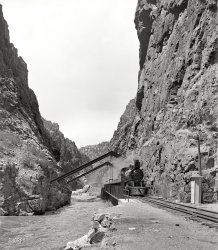
- The Boomerang: 1963
- Winter 1962-63 in Aspen, Colorado. Boomerang Lodge, designed by owner Charlie Paterson, a Frank Lloyd ... Posted by seri_art - 12/17/2008 - 6:44pm -
![The Boomerang: 1963 Winter 1962-63 in Aspen, Colorado. Boomerang Lodge, designed by owner Charlie Paterson, a Frank Lloyd Wright-trained architect (and ski instructor). The vehicle on the left is a Cadillac hearse used as a lodge limo! View full size.
Heated Pool ... Well, I certainly hope so!
IcebikeWhat a dedicated cyclist!
VintageNice grouping of old cars--the blue Pontiac by the Ford is very nice.
[Those are new cars! - Dave]
Motel Hell . . . oI'll take a two-way ticket in the Lodge-Limo if you don't mind.
Politically correctI'm no fan of 60's architechiture but even those that are must have to admit how ugly this building truly is. So few structures of this time period have been saved (thankfully) and I'm betting that even in the ever correct Aspen, this one is gone. Better to concentrate on saving the beautiful buildings from earlier in the century that are now threatened.
When in AspenI've stayed at the Boomerang many times on business, and it is wonderful. There's a rec room in the basement that has a window looking out into the in-ground pool. Very cool. The newer part of the hotel features gas fireplaces in every room, and private balconies. I think it is a bargain, especially for Aspen.
The BoomerangYou can see the rec room window to the pool in another photo in this Aspen winter 62-63 series. Alas, time marches on and Charlie sold the Boomerang and the lot across the street a few years ago. The two sites whose links are below describe the new version that's in progress. It seems to be a condominium leaseback arrangement but I'm not clear about it. The first site says, "To honor Aspen's past, The Boomerang's 'East Wing' will retain its historic charm. Originally sketched by Charlie Paterson while studying at Taliesin West, the breakfast lounge remains as it was - with its walls and fireplace of rustic concrete and windows arranged for maximum openness. Renamed the Paterson Room, it is a tribute to Aspen's past". We'll see...
http://www.newboomerang.com (good history section here)
http://boomeranglodge.com
(ShorpyBlog, Member Gallery, Cars, Trucks, Buses)](https://www.shorpy.com/files/images/s_8abfu9skt1886_std.thumbnail.jpg)
- Native American Women: c.1910
- ...
In my original caption I assumed the plateau was the Colorado Plateau since the negative came from Denver but thanks to ... Posted by D_Chadwick - 07/25/2016 - 7:13am -
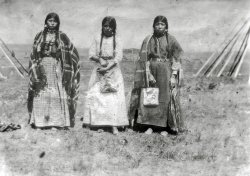
- Uray for Hollywood: 1940
- September 1940. "Theater in Ouray, Colorado." Now playing: "Primrose Path" with Ginger Rogers and Joel McCrea. ... Posted by Dave - 11/06/2018 - 8:01pm -
![Uray for Hollywood: 1940 September 1940. "Theater in Ouray, Colorado." Now playing: "Primrose Path" with Ginger Rogers and Joel McCrea. Photo by Russell Lee. View full size.
Gone todayThese ornate facades were made by two competing family companies, the Mesker Brothers Iron Works of St. Louis or George L. Mesker & Co. of Evansville, Indiana. Ouray had 15 such buildings. The Hiebler building is the only Mesker non-survivor.
Through dark of nightIt appears that the theatre is gone and in its place, a small post office. If you look at the mountains behind, they fit the configuration of the one in the above picture of the Uray. BTW, it was named after Chief Uray; I don't know when or why they added the "O".
[His name is generally spelled Ouray, although one is just as arbitrary as the other, devised as it was by users of the Roman alphabet. - Dave]
He/she is baaack!One of the coming attractions advertised is "Too Many Husbands," a Columbia Pictures comedy staring Jean Arthur as a wife whose first husband is supposedly lost in a shipwreck, only to return after she remarries. A couple of months later, RKO released "My Favorite Wife," a comedy staring Cary Grant as a husband whose first wife is supposedly lost in a shipwreck, only to return after he remarries.
Nearly every one of the silver-rush-era buildings on Main Street in Ouray with cast-iron facades has been preserved. This building, sadly, is the exception.
What a facade!From https://www.boxcanyonouray.com/ouray-heritage/history-of-ouray-the-meske...
For profit-minded businessmen in the late 1800’s the goal was to stand out from the crowd. For those who couldn’t afford fancy masonry or cast iron embellishments, there was an alternative: pick up a catalogue and order a decorative, galvanized sheet metal facade from the Mesker Brothers Iron Works or George L. Mesker & Co. Purchasers could pick and choose from a range of cast iron and pressed metal mass-produced components or spring for a lavish top-to-bottom facade. Their order would come in by train and in just a few days, a plain brick or wood box of a building could be transformed into a beautifully elegant edifice, at roughly one-fifth the cost of a masonry facade.
Moved across the street since 1940?And partially modified on the ground floor entrance? If so, the "Uray Theatre" is still standing.
"Cinema Treasures" (http://cinematreasures.org/theaters/28411) incorrectly lists the former Uray Theatre was located at the site of the historic Wright Opera House (southwest corner of Main and 5th), whose dimensions and facade look nothing like the above.
BUT, using Google Earth at street level, going half a click north of the Main & 5th on the east side of the street just after the Beaumont Hotel is an identical building to the Uray Theatre - same facade and ornamentation (sans triangular structure on the cornice up top and "James" in place of "18HEIBLER89"), only the ground entrance modified. Take a look at the street view - looks like the same building, just moved across the street sometime after 1940:
[The Uray Theatre was at 624 Main Street. The building seen below is next to the Beaumont Hotel at 515 Main -- two entirely different structures. As noted in the other comments, there are over a dozen buildings in Ouray with similar facades. - Dave]
14 out of 15 ain't badExcept for this building. The article linked by FixIt says that of the 15 Mesker façades installed in Ouray, 14 still remain. The exception: the Hiebler building at 624 Main St.
Murder and Suicide Startles CityNews clipping about the Hiebler family in Ouray. Click for the rest of the story.
(The Gallery, Movies, Russell Lee, Small Towns)](https://www.shorpy.com/files/images/SHORPY-8b26234a1.thumbnail.jpg)
- Going Back: 1942
- ... the bottom of the hill on this road. I was on my way from Colorado Springs to my Maryland home after serving a four-year hitch in the Air ... Posted by Dave - 08/06/2008 - 5:41pm -
![Going Back: 1942 1942. "Road out of Romney, West Virginia." 35mm color transparency by John Vachon for the Office of War Information. View full size.
RomneyI wonder if that house is still there. So much erosion.
[There's probably pavement where the house is. Something tells me Route 50 isn't two skinny lanes anymore. - Dave]
I think I see itI love Google Earth. I'm pretty sure that this is the bend in the road that we see in the photo. There is a bridge in the distance that also appears on the map, but the resolution is so low that I can't tell for sure if the house is still there. I couldn't figure out how to copy a link to the location on the Google Earth map, but here are the coordinates:
39°20'33.72"N
78°45'49.20"W
See if you agree.
dave
Indian MoundThis is the house seen here, across from the Indian Mound Cemetery. The houses are long gone. Route 50 was regraded, widened and straightened out many years ago. Satellite view.
The Yellow HouseThe satellite view from "Mountain Mama" (via Microsoft) is clearer than the Google version. It seems like that particular yellow house is gone, but it looks to me that the road is still two lanes - perhaps with a wider shoulder. And lots of homes still right along the road toward the center of town.
As posted in another thread, we need to setup a bounty service for a local to take a current photo!
Almost HomeThe bridge in the distance is over the South Branch of the Potomac River. I was born in the back room of a country store a few miles on down the road three years before this picture was taken.
Then and NowI have passed this scene many times over the years on our annual autumn trek to Blackwater Falls Park in West Virginia. In 2009, I stopped and spent about and hour reviewing this scene and comparing it to the Vachon photo. The scene today is almost identical to the Vachon view, with the following exceptions:
The bridge in the distance will soon be replaced by a modern one, but it remains in view;
The house on the left has collapsed, and nothing but rubble remains, hidden in the weeds;
And finally, the steep embankment on the right has been prettified by flowers and other plantings.
The roadway (Route 50) has never been widened or straightened out!
Romney, West Virginia: 1942 When I saw this photo, I could barely believe my eyes. In November of 1966, my 1964 Opal died at the bottom of the hill on this road. I was on my way from Colorado Springs to my Maryland home after serving a four-year hitch in the Air Force. I managed to coast to the side of the road. I walked back up to the house on the left to use the phone to call for help, but they didn’t have one. The next home up the road did. They called a garage a couple of miles away, and someone showed up a few minutes later. The guy said my points were defective, and that I would have to get the car fixed in Winchester, Virginia, where the nearest Buick/Opal dealer was. So I went back to the house and called the dealer, which was 50 miles away. They sent a tow truck out, and towed me and the car to Winchester. I stayed overnight in a motel. The dealer replaced the points the next day, and I headed home to Annapolis.
(The Gallery, Cars, Trucks, Buses, John Vachon, Rural America)](https://www.shorpy.com/files/images/1a34283u.thumbnail.jpg)
- Fort Garland: 1978
- ... taken outside his family's adobe home in Ft Garland, Colorado. The San Luis Valley in Southern Colorado/Northern New Mexico is a very isolated place and the Hispanic families ... Posted by SanLuis - 12/26/2011 - 9:05am -
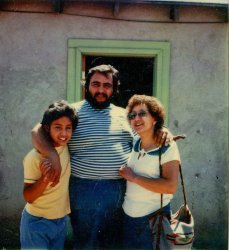
- Leadville Deluxe: 1941
- ... September 1941. "Houses in old mining town. Leadville, Colorado." Medium format acetate negative by Marion Post Wolcott for the Farm ... Posted by Dave - 03/09/2022 - 12:41pm -
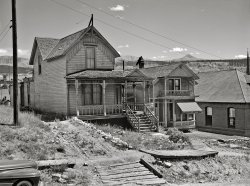
- Ouray Cafe: 1940
- ... September 1940. "Small business establishments. Ouray, Colorado." Medium format acetate negative by Russell Lee for the Farm Security ... Posted by Dave - 11/18/2020 - 10:41am -
![Ouray Cafe: 1940 September 1940. "Small business establishments. Ouray, Colorado." Medium format acetate negative by Russell Lee for the Farm Security Administration. View full size.
East Si-eed, representin'Apparently he also became the postmaster there.
Tipped?One of the buildings on the right is slightly out of plumb. My money is on the barber shop.
[The Mowatt establishment definitely leans to the left. - Dave]
Leans to the leftIs that because of the 1936 election poster for FDR’s second term?
Another Taylortot Another SHORPY sighting of a Taylortot Stroller
Learned a New WordNobby
adjective, nob·bi·er, nob·bi·est. British Slang.
fashionable or elegant; stylish; chic.
excellent; first-rate.
Iron ManThomas Mowatt has left a surprisingly large online footprint.
(The Gallery, Kids, Russell Lee, Small Towns, Stores & Markets)](https://www.shorpy.com/files/images/SHORPY-8b26054a.thumbnail.jpg)
- Boom to Bust: 1940
- ... 1940. "House dating from the early boom days of Silverton, Colorado." Medium format acetate negative by Russell Lee. View full size. ... Posted by Dave - 04/30/2020 - 2:09pm -
![Boom to Bust: 1940 September 1940. "House dating from the early boom days of Silverton, Colorado." Medium format acetate negative by Russell Lee. View full size.
It's a tricycleMay not be a Sky-King, but it looks like a 1930's fendered tricycle.
Now a B&BThe Wingate House:
http://www.wingatehouse.com/about_wingate.html
[I wonder what those miners would have to say about "$175 per night." - Dave]
What IS that?On the lawn, right side of photo, near corner of house. Is that a farm implement? A child's toy??
I am mystified.
Milk bottle-compliant?I see shelves under two of the upstairs windows - could those be for storing milk in the winter?
Also, what would miners think about llamas grazing on the property?
78 years on80 years old and she's still a little girl.
Re: What is that?It is a toy. Looks to me like the little girl's tricycle lying on its side. They made them with fenders back in the day
Return to GloryI was thinking that was a pretty nice place back in the day---great to see someone else thought so and made it happen!
(The Gallery, Cars, Trucks, Buses, Frontier Life, Kids, Mining, Russell Lee, Small Towns)](https://www.shorpy.com/files/images/SHORPY-8b26344a.thumbnail.jpg)
- Cascade: 1941
- ... to see so many properties along the CA side of the Colorado, reminded me a bit of the East Coast.
Still an Imposing Edifice ... Posted by Dave - 06/08/2011 - 2:14pm -
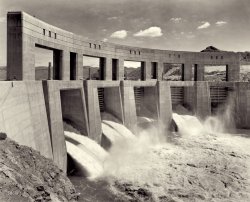
- Jim and Wife: Pie Town, 1940
- ... to the people of much of New Mexico, Arizona, and Colorado from 1922 to 1955. First on horseback and later by model T and other ... Posted by Dave - 12/14/2007 - 1:52am -
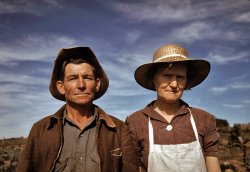
- Too Many Husbands: 1940
- September 1940. Ouray, Colorado. "Store building. Ouray is the center of a gold mining region and is ... Posted by Dave - 09/13/2020 - 3:07pm -
![Too Many Husbands: 1940 September 1940. Ouray, Colorado. "Store building. Ouray is the center of a gold mining region and is developing as a tourist center." A continuation of the storefronts last seen here, and a sequel to that other Uray Theatre. Acetate negative by Russell Lee. View full size.
Here we go now
Shorpy exposure!After three Ouray posts which I viewed and reviewed tonight I ended up taking a virtual Google Streetview tour of the town and a lookup in Wikipedia. The town looked touristy and sure enough, Ouray is the "Switzerland of America" and tourism is the major economy. Looks like a swinging place on a weekend! A town I'd love to check out, and one I'd never heard of until Russell Lee and Shorpy.
[I first went there as a tot in 1965. Ouray, nearby Silverton and the Alpine Loop are worth the trip. - Dave]
Million Dollar HighwayWe drove from Durango to Denver a few years back, and had lunch in Ouray. What impressed me about the town (other than the switchbacks in the road entering town), was that it is built between two tall mountains, and seems to have a very limited amount of sunlit hours.
The road through Ouray is called the Million Dollar Highway, as it's said the fill used to build it (old mining tailings) would likely yield about a million dollars' worth of metal per mile if reprocessed with modern methods; or maybe that's just for the tourists. Anyhow, it was a very pleasant drive through the mountains, at least, until we got to Leadville, which is as beautiful as its name would imply.
PronunciationUnless you want to sound like a tourist (which 90% of the people you see in Ouray are), pronounce the name "You-RAY".
Had a great visit here a few years ago.Ouray is a great little tourist town that an Aussie friend and I visited a few years ago. We stopped to visit a fantastic collection of 110 year old automobiles and an unbelievable collection of brass carriage lamps and other brass "goodies". I was driving (truck and enclosed car trailer) and remember the difficulties I had in parking and even weaving through the side streets with my rig. Would be glad to return again, but maybe leave the trailer behind!
[Where is the car collection housed? - Dave]
(The Gallery, Movies, Russell Lee, Small Towns, Stores & Markets)](https://www.shorpy.com/files/images/SHORPY-8b26053a.thumbnail.jpg)
- Yogi Berra: 1957
- ... Roger Maris and Yogi Berra. And I was a little kid in Colorado. It's dang sure like dey-javoo all over a'gin. Thanks, Dave.
RIP, ... Posted by Dave - 09/23/2015 - 10:27am -
![Yogi Berra: 1957 Yogi Berra, Yankees Hall of Fame Catcher With a One-of-a-Kind Wit, Dies at 90
March 20, 1957. "New York Yankees baseball player Yogi Berra, three-quarter length portrait, in uniform, in the locker room." 35mm negative by Marvin Newman for Look magazine. View full size.
They don't make 'em like that any more, and probably never didQuotes from Yogi and comments thereon were a mainstay of every sportswriter striving to craft colorful and memorable articles. His skills on the diamond were hardly negligible either.
It's worth pondering that today's hot rookie probably signs for a larger bonus than Berra's lifetime Yankees earnings, even adjusting for inflation.
R.I.P., Yogi. You've come to the fork in the road, and taken it. They don't make 'em like you any more and, yourself excepted, probably never did.
A True One-Of-A-Kind LegendI learned to love baseball as a kid growing up in New York watching the Yankees on WPIX TV Channel 11 during the late 1950's-early 1960's. When the NY Mets were born in '62, I was smitten by their utter ineptitude and have been a lifelong Mets fan since. However, Yogi still remained a favorite player of mine. Somehow it's fitting that Berra should have a locker next to another New York baseball legend, although not quite for the same reasons: Marvelous Marv Throneberry of the Mets.
Thanks for the precious memories, Yogi. Let's raise a glass of Yoo-hoo and toast this true one-of-a-kind legend!
Over.There'll never be another Yogi.
It's over now, Big Guy.
Yogi's compassionI had the pleasure of working with Yogi Berra several times during his public autograph signings. Once, in Orlando, a young boy was standing on the fringes of the roped-off area watching quietly and holding a baseball. After awhile, Yogi asked one of the assistants to "bring that kid over here." Turns out that the boy bought the baseball, but didn't know that you had to pay for Yogi's signature. Yogi talked with the boy and happily signed his ball. I'm sure that the now-adult fan is saddened by Berra's death and will always remember the kind gesture. RIP Yogi.
Coincidence?Yogi died on September 22, 2015, sixty-nine years to the day his made his major league debut: September 22, 1946.
The Yankees won the American League pennant in 14 of the 17 years Yogi played for the Bronx Bombers.
Lawrence PeterBerra, the name on his locker reads Berra S. what's that all about?
[That's an 8, his number. -tterrace]
Not a Card CollectorThe three cards I was most proud of back in about '62 (I'm 63 now) were Mickey Mantle, Roger Maris and Yogi Berra. And I was a little kid in Colorado. It's dang sure like dey-javoo all over a'gin. Thanks, Dave.
RIP, YogiMy dad took me to my first Yankees game in 1952, when I was four years old.
I had the pleasure of seeing Yogi play many times over the ensuing years.
Year after year, all my heroes are passing away.
RIP MR BERRA - you may be gone but you will NOT be forgotten by all your loving fans....
St. Louis' OwnYogi was born and raised in the St. Louis Italian neighborhood known as "The Hill" along with childhood friend Joe Garagiola. They grew up across the same street from each other.
Marvelous MarvNext locker door neighbor to Marv Throneberry, MLBer who came up with the Yankees in 1955 but achjeived his greatest fame as "marvelous Marv", terrible fielding first baseman for the worst team in baseball history, the '62 NY Mets (managed by Yogi's former boss, Casey Stengel). Casey once told Marv "We was going to get you a birthday cake, but we figured you'd drop it."
(LOOK, Sports)](https://www.shorpy.com/files/images/SHORPY-3d02381u.thumbnail.jpg)
- Aspen Mermaid: 1963
- Aspen, Colorado, winter 1962-63. Boomerang Lodge, designed by owner Charlie Paterson, ... Posted by seri_art - 09/20/2011 - 11:28pm -
![Aspen Mermaid: 1963 Aspen, Colorado, winter 1962-63. Boomerang Lodge, designed by owner Charlie Paterson, a Frank Lloyd Wright-trained architect (and ski instructor). This was a setup for a professional photo shoot. I shot it without the lights the pro used. Charlie is the guy with the black hair looking into the pool. View full size.
Boomerang LodgeI just love this -- the Rat Pack meets Downhill Racer, with a dash of James Bond. Check out seri_art's other Aspen photos in the Member Gallery. Coming soon to the homepage: Some exterior shots of the Boomerang.
Too bad!Identical aquatic twins would have been so much more appropriately Blofeldian.
Check againTake another look and you'll see that it's just a single mermaid and her reflection.
[It's a refraction, not a reflection. - Dave]
I love thisWhy was this type of bar so popular in the USA? I mean the "mermaid bar." Is it possible that I have seeing this photo on a National Geographic?
[Perhaps it is that you have been to there. - Dave]
Not a bar...It was the lower lounge of the Boomerang Lodge, with a fireplace on the left and a window into the pool.
(ShorpyBlog, Member Gallery, Art & Design)](https://www.shorpy.com/files/images/s_8abfu9skt1883_std_.thumbnail.jpg)
- Needle's Eye: 1943
- ... spending the searing hot desert afternoon immersed in the Colorado River, the poor man's air conditioning.
Welcome to the
... Posted by Dave - 03/01/2014 - 10:14am -
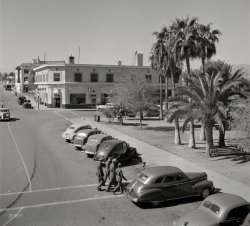
- Pamphlet Warehouse: 1912
- ... about receiving government publications from Pueblo, Colorado. Heck, I still remember the zip code 81009. I wonder is this office ... Posted by Dave - 08/21/2012 - 8:33pm -
![Pamphlet Warehouse: 1912 Washington, D.C., 1912. "Government Printing Office -- views." Our second installment in this exciting series. Harris & Ewing glass negative. View full size.
No Smoking, PleaseLet's see - a wooden roof, wooden beams and rafters, wooden floor, wooden shelves piled high with paper, ventilation from the sides and top. If I worked there, I'd want to see a whole lot more than one or two wooden signs pointing me toward the fire escape. I sure hope they had an early "no smoking" policy (prominently displayed on a paper-covered wooden plank, of course).
PuebloGrowing up in the 60's and 70's we were constantly peppered with television commercials about receiving government publications from Pueblo, Colorado. Heck, I still remember the zip code 81009. I wonder is this office was the predecessor to the Pueblo office? I wonder if Pueblo still sends out government pamphlets?
[They sure do. - tterrace]
Top menI believe I'm familiar with this warehouse.
In 1936, the Ark of the Covenant (Yes, *the* Ark of the Covenant!) was stored by government officials here. Archaeologists and scholars, who rescued the artifact from the Nazis in the African desert, were told that it was being stored "someplace safe" and would be studied by "top men." When pressed about which people would be investigating the Ark, the Army intelligence agents simply repeated, "Top. Men."
The Ark, and the power it holds, has not been seen since.
Boys, you won't believe meOne day almost half of all the information in those documents on your cart's top shelf will fit on what will be called a "floppy disc." I am serious.
It's kind of spooky..the similarity.
Retail Sales of government documentsare tucked away in a rather large GPO warehouse in Laurel, Maryland. Not the easiest place to find (8660 Cherry Lane). Just another of the large government (secret and otherwise) facilities in the greater Laurel area.
(The Gallery, D.C., Harris + Ewing)](https://www.shorpy.com/files/images/SHORPY_01687a.thumbnail.jpg)
- Silverton: 1940
- September 1940. "Silverton, Colorado, lies in a valley at 9,400 feet elevation. This has been a center for ... Posted by Dave - 11/27/2020 - 2:32pm -
![Silverton: 1940 September 1940. "Silverton, Colorado, lies in a valley at 9,400 feet elevation. This has been a center for mining and milling operations, and the tailing-choked Animas River can be seen at right." Acetate negative by Russell Lee for the Farm Security Administration. View full size.
I've always wonderedDo kids growing up in a place like this walk up those mountains just for the fun of it or do they just ignore them? Because when I was a kid I'd have definitely felt like doing it.
View in 2009Shot this on my way out of town, a tourist shot. I think you can see the building with the tower in the 1940 view toward the right side of mine, minus its tower I think.
Picture qualityStreetview has the almost the same point of view, taken from Highway 550, back in December of 2007, but the resolution is an insult to our eyes after having seen this excellent photo.
Plus 70-some yearsBoth much the same, and changed in a thousand ways.
Hillside CemeteryWhat's that black line up near where the hillside cemetery is?
[A scratch in the emulsion. - Dave]
My Silverton pic: 2018In August of 2018 while on vacation, I drove up to Silverton & saw this view & had to take a picture. I did not expect to see an 80-year-old picture 2 years later. What a great comparison.
(The Gallery, Frontier Life, Landscapes, Mining, Russell Lee, Small Towns)](https://www.shorpy.com/files/images/SHORPY-8b26301a.thumbnail.jpg)
- Cave of the Winds: 1963
- June 1963. A tourist stop in Manitou Springs, Colorado, with mineral water springs and all the usual "souvenirs." Captured ... Posted by K. McCool - 08/02/2018 - 7:51pm -
![Cave of the Winds: 1963 June 1963. A tourist stop in Manitou Springs, Colorado, with mineral water springs and all the usual "souvenirs." Captured on 35mm Kodachrome by my great-uncle Herbert F. Krahn of Oshkosh, Wisconsin. View full size.
Oh GoogleFunny that Google automatically blurred out the face of the statue of the Indian chief in the Google Maps picture, to protect the privacy of the statue, I guess!
The Trading Post and the Mineral SpringIf you zoom out a little and view to the right on the Google Map posted by John Howard, you can see the remains of the Trading Post souvenir shop and the statue of the Ute Chief that dispensed the spring water. Here's what they looked like in 1963.
The charm is missingAt some point, the road less travelled was given an arch less inspiring.
That's a 1953 Cadillac FleetwoodSeven-passenger series 75 in the foreground. I have the same model in a '51 which I've been trying to restore for 24 years. In the background is a 1960 Mercury, or there's a slight outside chance it could be a 1960 Canadian Monarch. If only I could read the script on the right rear fender. Both are magnificent automobiles.
[The Mercury is a Monterey. The 1960 Monarch had different taillight lenses and a crown on the trunk lid. And weren't Series 75 Cadillacs generally advertised as eight- or nine-passenger cars? - Dave]
You're right. They were 8 or 9 passenger cars. I don't know what I was thinking. I should get the thing finished and drive it.
Not the best purchaseMy father bought that exact white 1960 Mercury Monterey new when I was 18. A huge slow beast based on the Lincoln unibody. Not a teenager's favorite, to say the least.
[Mercurys of this era used body-and frame construction and were not based on the unit-body Lincolns. - Dave]
A matter of tasteMy father had a 1960 Mercury Monterey just like this, even the same color. It was about 4 years old by the time he acquired it. My brother and I thought it about the ugliest car ever built. I have to admit I still feel pretty much the same over 50 years later. I guess it's a matter of taste though, my father liked it, as he did just about anything else built by Ford.
Was There, ThenI could have been riding by when this picture was taken. I was 5 and in the back of one of my dad's cherished Buicks, reading Scholastic Books that kindly teacher Mrs. Hanks had loaned me for the long trip from Ohio. I had some Silver Surfer and Sgt. Rock comics that I read over and over too, often sitting on the floor in the back in a tent made of a beach towel held up by tucking the edge behind my parents' backs. Dad had a job interview in Denver, so he and Mom made a trip out of it. We also drove through the Black Hills and Mount Rushmore on that trip. I remember the pine smell and the friendly chipmunks. He didn't get the job.
(ShorpyBlog, Member Gallery)](https://www.shorpy.com/files/images/CaveOfTheWinds.thumbnail.jpg)
- Emergency: 1906
- ... including the state capitals of Michigan, Texas and Colorado, city halls and courthouses all over the United States, and the old ... Posted by Dave - 08/13/2012 - 10:07am -
![Emergency: 1906 Detroit circa 1906. "Harper Hospital." And a dubious-looking conveyance we trust isn't the ambulance. Detroit Publishing glass negative. View full size.
Grandly GothicThe seemingly endless variety of Harper Hospital's huge American Gothic style brick building and its dependencies sprawled over a four-acre campus, and housed one of the nation's most innovative teaching hospitals, staffed by Wayne State University's School of Medicine. The hospital's original wood buildings of the 1860s were replaced by this complex in the mid-1880s, which remained in use until it was demolished in 1970. The architect was Elijah E. Myers (1832-1909), a prolific and famously litigious designer of dozens of important public buildings, including the state capitals of Michigan, Texas and Colorado, city halls and courthouses all over the United States, and the old Brazilian Parliament building in Rio de Janeiro.
Hitching posts Like those faux tree hitching posts along the street. At least those stubs would keep the rope from slipping off as easily.
Also, is that a block of ice strapped to the vehicle's radiator? Maybe the thing was prone to overheating if it went faster than 5 miles an hour.
Free DeliveryThe vehicle appears to be a department store delivery van.
[Very plausible. - tterrace]
With Rue One's Heart is LadenThe architecture of this facility no doubt gave credence in the minds of more than a few that hospitals are places one goes to die.
(The Gallery, Cars, Trucks, Buses, Detroit Photos, DPC)](https://www.shorpy.com/files/images/SHORPY_4a13462a1.thumbnail.jpg)
- Leadville Castle: 1941
- ... September 1941. "House in old mining town. Leadville, Colorado." Photo by Marion Post Wolcott for the Farm Security Administration. ... Posted by Dave - 07/02/2014 - 5:20pm -
![Leadville Castle: 1941 September 1941. "House in old mining town. Leadville, Colorado." Photo by Marion Post Wolcott for the Farm Security Administration. View full size.
Interior viewshttp://www.zillow.com/homedetails/815-Harrison-Ave-Leadville-CO-80461/89...
The place has a beautiful Victorian interior.
Happy To SeeThat the nifty chimney has made it through the years.
Still Standing! Well, the house is still there. (Photo from 2012.)
[It has the same nifty Band-Aid color scheme as our Comments box! -Dave]
LeadvilleI've always wanted to visit Leadville.
At an elevation of 10,152 feet, Leadville is the highest incorporated city in the US. It's a mining boom- (and bust-) town, with a 19th-century opera house and loads of Victorian houses like this one.
LeadvilleBeautiful photograph. The clarity and detail are phenomenal. Nice find.
(The Gallery, M.P. Wolcott, Mining)](https://www.shorpy.com/files/images/SHORPY-8c31655a.thumbnail.jpg)
- Night Train: 1943
- ... better tracking on the steep and curvy Raton Pass grade in Colorado and New Mexico.
This begot one of the most popular wheel ... Posted by Dave - 01/07/2013 - 3:46pm -
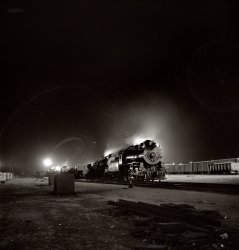
- Denver & Rio Grande: 1939
- ... October 1939. "Railroad crossing. Rio Grande County, Colorado. Locomotive of Denver & Rio Grande Western R.R." Photo by Arthur ... Posted by Dave - 01/20/2018 - 6:27pm -
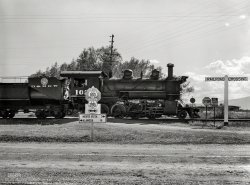
- Garage à Trois: 1940
- ... September 1940. "Locomotives in roundhouse. Durango, Colorado." Medium format acetate negative by Russell Lee for the Farm Security ... century:
https://www.theatlantic.com/photo/2020/04/colorado-photos/610141/#img19
Now in Trois-D Or at least a panoramic ... Posted by Dave - 04/27/2020 - 9:58am -
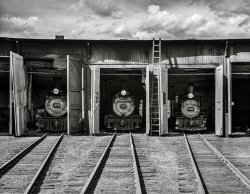
- New Tontine: 1900
- ...
Arc lamp service I think the photo was taken in Colorado. The blanket on the hood of the Model T service truck tells us it's ... Posted by Dave - 08/08/2012 - 2:51pm -
![New Tontine: 1900 New Haven, Connecticut, early 1900s. "New Tontine Hotel, Church and Court streets." 8x10 inch glass negative, Detroit Publishing Company. View full size.
Street lightFound the light fascinating. Wiring from the pole and then a cable and pulley system to raise and lower the light itself. Amazing contraption.
[It's an arc lamp. - Dave]
All gone, except the Green.From "Leading Business Men of New Haven County" (1887, Wm. Hale Beckford):
The hotel building is a substantial four-story structure, on the corner of Church and Court streets, opposite the Yale College grounds or "Green."
Tbe cuisine is unexceptionable, the aim of the prudent landlord being to supply everything calculated to tempt the appetite, and to serve the viands in a manner calculated to please the most exacting bon vivant. Every modern appliance and convenience has been provided, and a stay at the "Tontine" will ever be remembered by the guests of Mr. Bradley as the most pleasing experience and feature of a visit to the Elm City.
The fence is still thereView Larger Map
A perfect view of how the arc lamps were used.This picture clearly shows the pulley mechanism for the servicing of the electrodes and the cleaning of the globe.
Dave, if you ever come across a shot of an arc lamp being serviced, please share it with us.
Arc lamp serviceI think the photo was taken in Colorado. The blanket on the hood of the Model T service truck tells us it's winter. I love the block of wood the electrician is standing on, to insulate himself from ground!
Interesting name for a hotel A Tontine is a scheme for raising capital which combines features of a group annuity and a lottery. Each member in the group puts an agreed upon sum into a pot, and upon the death of every other member, the last person remaining collects the pot.
(The Gallery, DPC)](https://www.shorpy.com/files/images/4a19646a.thumbnail.jpg)
- Cottage for Sale: 1921
- ... line, and is bounded on the east by Fourteenth street and Colorado avenue. It is intersected by Longfellow, Kennedy, Jefferson, ... Posted by Dave - 09/13/2011 - 11:59am -
![Cottage for Sale: 1921 Washington, D.C., circa 1921. "Dunigan houses, 18th Street." Offered for sale by the developer D.J. Dunigan. National Photo Co. glass negative. View full size.
A classicA very nice example of a center-hall Colonial with superb brickwork including some classic quoins. And not your wimpy modern brick veneer, but true brick and block construction I'd wager. Built to last!
Garage LustMan I'd love to have that garage. Just think of the hours I could spend putzing around in there, fixing a vacuum sweeper, soldering up patch cables or changing the water pump on an engine. There's nothing like a detached garage. Watch "Gran Torino" and you'll see why.
That garage means business tooA detached garage in brick and shingles to match the house, a pair of real doors and no foolin'.
The guy who built this house had a very clear idea of what he was about.
Sad SongOur little dream castle with every dream gone
Is lonely and silent -- the shades are all drawn,
And my heart is heavy as I gaze upon
A cottage for sale. ...
The key's in the mail box, the same as before
But no one is waiting for me anymore
The end of our story is told on the door:
A Cottage for Sale.
Larry Conley and Willard Robison, 1929
Where is it now?I google mapped it and wound up at a bus yard in an industrial district. I hope there is some mistake, like renumbered addresses in the 40's or some such thing. Are there any locals who know where this house might be today?
Jeff
[1321 New York Avenue is the address of the real estate office, not the house. Which, according to the caption, was on 18th Street. So far I haven't been able to find it. - Dave]
Dunigan House NowBased on following article, I checked a little around the neighborhood of 16th St and Longfellow, Kennedy, Jefferson, etc. (18th street doesn't extend this far north). Found a house in 5200 block of 16th which matches the photo quite closely. Of course it could be a design that is repeated elsewhere in the neighborhood.
Washington Post, Jan 16, 1921
$1,000,000 Invested in 70 New Homes
Most of Dunigan Project on Fourteenth Street Already Sold
New homes already representing an outlay of over $1,000,000 have been erected within less than a year on the old White tract now known as Fourteenth Street Highlands, according to an announcement yesterday by D.J. Dunigan, real estate operator, who purchased the tract early last year.
This thriving new subdivision is located on the crest of the hill, at the end of the Fourteenth street car line, and is bounded on the east by Fourteenth street and Colorado avenue. It is intersected by Longfellow, Kennedy, Jefferson, Ingraham, Hamilton and Thirteenth streets. From this high and healthy area there is a beautiful and comprehensive view of the entire city.
Mr. Dunigan has already built 70 substantial homes on this tract. Most of the 70 which he has put on the market have been sold. Many of these homes are large, with four bedrooms. Some of them are only two squares from Sixteenth street, where most of the residences range in cost from $20,000 to $60,000.
Mr. Dunigan buys materials in large quantities, and does his own building, thus eliminating many intermediary items of building costs.
View Larger Map
Much like Grandmother's houseThe general layout, brick construction, raised yard, privet hedges and two-story-plus-attic-and-cellar closely resemble my father's family home in Binghamton, NY, built about the same time or a few years earlier.
The garage had a turntable that let your rotate the car to avoid backing dowj the long driveway. On the back porch, opening into the kitchen off the drive, there was a small cupboard door opening to the outside for the milkman to use, and I think the original icebox was arranged so the ice man could deposit his block from the outside as well.
These features were long disused when I visited in the 1950s, but my aunts loved to show me the fixings. It was my father's chore as a kid to get up early (which he loathed) to stoke the coal furnace in the basement and get the heat going.
I have a 1929 Hit of the Week recording of "Cottage for Sale," indeed a sentimental little piece.
[My favorite is Nat Cole's version from 1957. - Dave]
Possible Dunigan Homes SpottedGallatin St & 13th Street NW.
(The Gallery, D.C., Natl Photo)](https://www.shorpy.com/files/images/30240u.thumbnail.jpg)
- Wife Preserver: 1939
- ... rehabilitation client, with preserved food. Mesa County, Colorado." Medium format acetate negative by Arthur Rothstein for the Farm ... Posted by Dave - 03/01/2018 - 11:45am -
![Wife Preserver: 1939 October 1939. "Mrs. H.H. Poland, wife of FSA rehabilitation client, with preserved food. Mesa County, Colorado." Medium format acetate negative by Arthur Rothstein for the Farm Security Administration. View full size.
MatersMaters, taters, beans and corn! Along with an assortment of pickles, peaches, beets and I think eggs at the top. Yes they canned eggs for the winter when the hens stopped laying.
[Those are not eggs. - Dave]
A knockoutHer smile is captivating. What a beauty!
WORK!She appears (rightly so) proud of all the work she's done.
Not eggs?Then what??
Re: Not eggsMy guess is pears.
Well done Dave!Your title is finely crafted.
(The Gallery, Arthur Rothstein, Kitchens etc.)](https://www.shorpy.com/files/images/SHORPY-8b18765a.thumbnail.jpg)
- Framed: 1900
- ... that fits At around 60 inches in width, the panorama of Colorado's Garden of the Gods, with Pike's Peak in the distance, is the largest ... Posted by Dave - 08/14/2012 - 4:27pm -
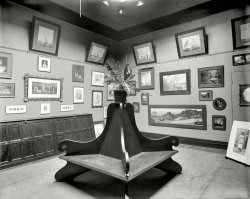
- Beet Train: 1943
- ... workers recruited and brought to the Arkansas valley, Colorado, Nebraska and Minnesota by the FSA to harvest sugar beets." View ... Posted by Dave - 06/11/2008 - 11:18am -
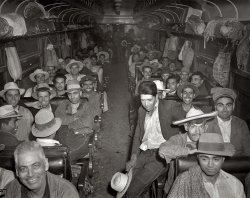
- Cruisin' 1968
- ... to me on a cold snowy Christmas morning in 1960 or 1961 in Colorado. Pink and white with streamers coming out of the handlebars. There was ... Posted by bhappel - 09/13/2011 - 1:38pm -
![Cruisin' 1968 Indianapolis, 1968. My brother Dan on his Schwinn along with sister Beth on her trike, in the alley next to our house. Our cousin David is back by the fence. We were all dressed up for our youngest brother's Baptism. View full size.
Me TooI also had a Schwinn bike. Mine was green and I seem to remember it being much heavier than the one in the picture. Me and that bike went all over Brooklyn and out over the Marine Park Bridge (now the Gil Hodges Bridge) to Riis Park back in the '60's.
Thanks for helping me to remember!
Memories of the mid-1960sThis picture really takes me back to the mid-60s when my brother and sister and I would be ready for church, but still have some time to kill before my parents were ready to leave. We'd ride our bikes in the street in front of our house, play catch (either baseball or football) or play tag.
The CousinGrowing up I was fortunate to have many cousins in the neighborhood. Two of my mothers three sisters and my father's two brothers and his sister lived within walking distance. I grew up with eight cousins (there were two more in Boston) and that extended family supported each other (and grandparents) through the hard times of the 30s, the war and old age. The next two generations were not nearly as close and now live across the breadth of this country as well as Europe and Asia.
Love the kickstandIt looks like he's actually riding the bike, until you zoom in on the larger version where you can see the kickstand holding him up. Funny! I love little details like that in these older photos.
I'm confused...Did you and your brother & sister have the same Dad? The previous picture shows your father on a tricycle in 1963, looking younger than your sister did in 1968.
[You'd be less confused if you looked at the "Submitted by" tag above each photo. - Dave]
Trusting ParentsI was 8 years old in 68, so I too know what it is to dress up in "nice clothes" to go someplace important. I my case Disneyland was an every-other-month event. Mom always got me ready first, and rather than turn me loose to play, made me sit on a couch for the half an hour it took her and Dad to get ready.
The worst part was that the TV was in the den (just one set in the house, thank you) and I was always made to sit on the Ethan Allen sofa in the living room, clad in stiff plastic slipcovers where she could keep an eye on me.
Time never dragged so slow as waiting on that dull, hot, uncomfortable sofa, and there would be words if I squirmed so much she had to tuck in my shirt a second time.
The kid in the backgroundI remember childhood from the perspective of the kid in the background. Involved, but not quite, if you know what I mean. The last kid to be picked for kickball, waiting hands in pockets.
Re: Kid in the backgroundI can't fully speak for my cousin David, but I expect that his expression and mood stem from: having to dress up in "good" clothes / going to church not on a Sunday / going to Aunt & Uncle's house where he has to behave and can't get to his toys / not getting attention from our Aunt Lee who was photographing my family more than he and his siblings (my profile photo is also from this same day).
And farther in the background, my father can be seen in the front yard setting his 35mm camera, likely getting a picture of Jim's godparents. Jim's godfather? Why, it's cousin Steve, seen here on Shorpy some 20 years earlier!
Pink and WhiteMy Schwinn bike came to me on a cold snowy Christmas morning in 1960 or 1961 in Colorado. Pink and white with streamers coming out of the handlebars. There was a push button horn in the middle framework of this "lady's bike". My beloved father shoveled the snow outside our house to the corner so I could ride it up and down that short distance. I was 6 and I remember it as if it were yesterday.
(ShorpyBlog, Member Gallery, Kids)](https://www.shorpy.com/files/images/Img6c.thumbnail.jpg)
- 10th Mountain Division, Camp Hale: WWII
- ... row, seventh from right.
Location Camp Hale was in Colorado.
Dad in this photo (I think!) Great photo - thanks for posting! ... Posted by LindseyKBrennan - 03/30/2010 - 11:31am -
